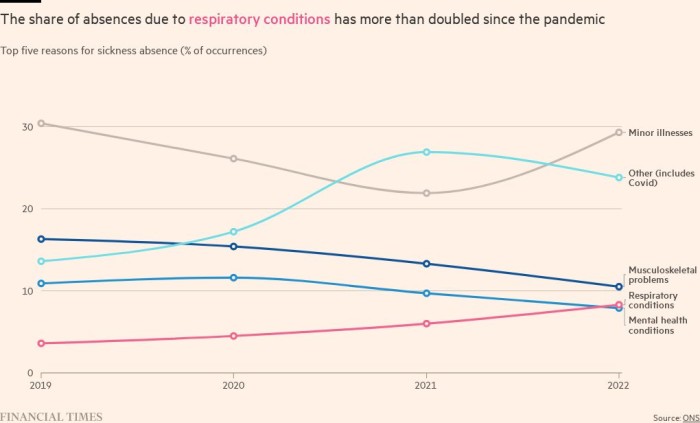UK lost record number of working days to sickness in 2022, says ONS
The number of working days lost to sickness in the UK hit a record high last year, according to official data published on Wednesday that will reinforce fears over the impact of ill health on the economy.
Minor illnesses were the main reason for people to take sickness absence, although Covid-19 was still a big factor, the Office for National Statistics said. The ONS also noted that respiratory conditions had overtaken mental health problems to become the fourth most common reason for sickness.

The Bank of England’s Monetary Policy Committee, which sets interest rates, thinks that jump is one reason why labour shortages, and the accompanying pressures on wages, risk making high inflation more persistent in the UK than elsewhere.
The number of people in work who have a long-term health condition has also risen. Wednesday’s figures show that the rate of sickness absence for this group rose to 4.9 per cent in 2022 — the highest level since 2008 — compared with an absence rate of 1.5 per cent among other workers.
Paul Nowak, general secretary of the Trades Union Congress, the umbrella body for the UK labour movement, said even this data was bound to understate the true level of sickness because many low-paid workers were not eligible for sick pay and others could not get by on the “miserly” rate of statutory sick pay.
This story originally appeared on: Financial Times - Author:Delphine Strauss



























